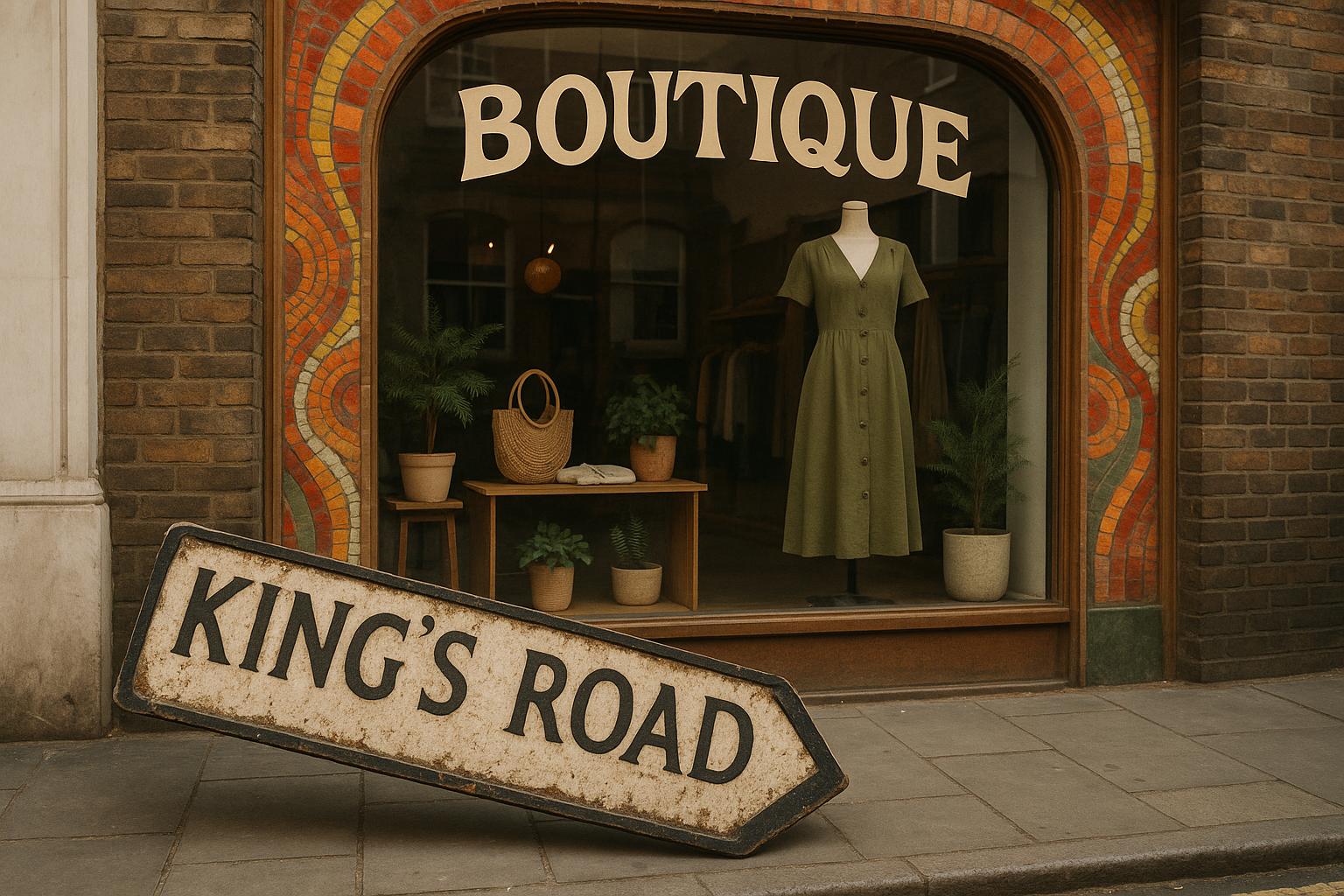During the sunlit summer of 1967 in London, a distinctive cultural transformation was underway, centred in the World’s End area of Chelsea along King’s Road. It was here, in a modest shop at No. 488, that the boutique Granny Takes a Trip emerged as a beacon of Swinging London’s flamboyant style. The shop, known for its eyebrow-raising name and audacious fashion, was co-founded by Sheila Cohen, her painter boyfriend Nigel Waymouth, and their tailor friend John Pearse. Their vision combined rare Victorian garments with bold contemporary designs, offering an eclectic mix that was both nostalgic and pioneering. The boutique’s rich collection included frilly Byronic shirts, flared trousers, and even pieces from renowned Parisian fashion houses, making it a treasure trove for the era’s artistic and musical elite.
The boutique was emblematic not just for its wares, but for its cultural atmosphere. Salman Rushdie, a King’s College student at the time, recalled the exclusivity and unique vernacular of Granny’s clientele, who dismissed both mainstream Sloane Rangers and the Carnaby Street trendsetters with equal disdain. The store played a crucial role in transforming men’s fashion, encouraging bold experimentation and a new consciousness about style. Its influence was rapidly magnified when John Lennon and Paul McCartney stopped by and became instant fans, foretelling the Beatles’ iconic use of Granny garments on the back cover of their 1966 album, Revolver. This endorsement triggered a cascade effect, attracting the Rolling Stones, the Who, and other leading figures of music and culture, cementing Granny Takes a Trip’s status at the heart of 1960s London’s avant-garde scene.
The boutique’s impact extended beyond fashion into the social fabric of Swinging London. Christopher Gibbs, a noted tastemaker, observed how Granny’s appeal blurred the lines between pop stars and ordinary fans, democratizing cool. The shop’s reach included famed personalities such as Anita Pallenberg, John Paul Getty II, Barbra Streisand, and the model and muse Amanda Lear. The flamboyant aesthetic spilled over onto magazine covers, concert stages, and film sets, with notable appearances by figures like Joe Cocker at Woodstock and Lou Reed in Amsterdam. Despite changing tastes in the 1970s, Granny remained a hub for those drawn to its unique blend of "flash and trash," although the boutique eventually succumbed to the coming wave of New Wave and New Romantic styles by the end of the decade.
Recently, Granny Takes a Trip has been resurrected on King’s Road, signalling not only a homage to its revolutionary past but also a modern reinterpretation with a pronounced commitment to sustainability. According to British Vogue and other fashion outlets, the relaunched boutique honours its legacy through a careful use of vintage and deadstock fabrics, blending the original spirit of inventive reuse with contemporary eco-consciousness. The revival also aims to preserve the boutique’s distinctive unisex and colourful style, reflecting an ongoing cultural dialogue about identity, creativity, and environmental responsibility. This rebirth confirms Granny Takes a Trip’s lasting impact on fashion and cultural history, standing as a symbol of imaginative expression that continues to inspire — a true work of art to wear, echoing the Oscar Wilde aphorism championed by cultural chronicler Paul Gorman.
📌 Reference Map:
- Paragraph 1 – [1]
- Paragraph 2 – [1], [4], [6]
- Paragraph 3 – [1], [3], [4], [6]
- Paragraph 4 – [2], [4], [5], [6]
Source: Noah Wire Services
